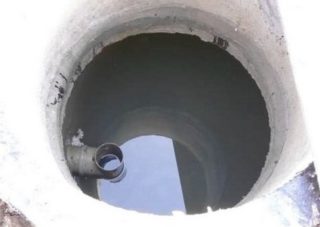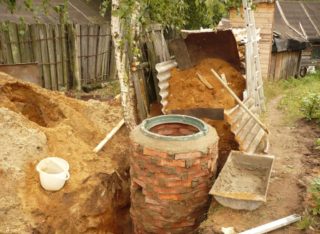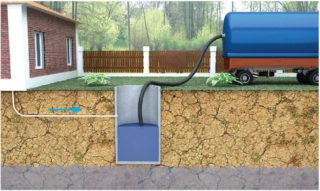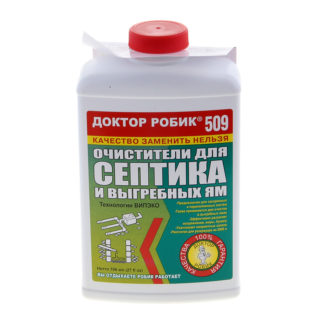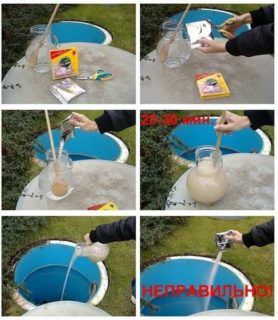The construction of a residential sector in an area remote from the city is accompanied by a number of problems. The main problem is the impossibility of bringing the city sewage system to such sectors. The only solution to the sewage issue is a cesspool. Summer cottages are equipped with a cesspool system. There are several options for cesspools. Their designs and features will be discussed in this article.
Symptoms and causes of malfunction
There are signs that determine the state of the system:
- the bottom is covered with silt;
- the walls of the pit are covered with deposits that are difficult to wipe off;
- sharp unpleasant odor;
- fast filling of the cavity of the drain system.
The bottom is covered with silt due to a prolonged lack of cleaning. The clearest sign of a silt-covered reservoir is a significant reduction in displacement. The rate of filling the waste volume decreases. As a result, the system overflows and needs to be pumped out. Another sign of siltation is the deposition of fatty masses on the walls of the container. They significantly reduce the volume and speed of filling. It is very easy to assess the condition of the pit by visual inspection of the hatch. Silt deposits will be visible on its surface. The second option is a very pungent smell.
Types of drain pits
There are probable reasons for the rapid filling of the drain cavity:
- The system often fills up quickly due to the fact that it is not designed for the incoming volume of effluent.
- The drain is clogged with solid waste, tree leaves, branches, earth.
- The effluent is in contact with the environment.
- Lack of regular cleaning. Fatty particles stick to the walls and reduce the volume of the cavity, preventing the outflow of fluid.
In summer cottages, a homemade pit is used. They are called cesspools without a bottom. The drain system is presented in the form of a well. He rummages away from home. The advantages of such a drain are:
- low price;
- ease of use;
- no difficulty in cleaning.
The pit is endowed with disadvantages:
- ecological harm to the adjacent territory;
- fills up quickly;
- easily covered with silt;
- drains freeze in winter.
Sealed pits with a bottom are a more complex design. The bottom is usually concreted. The walls are made of:
- bricks;
- reinforced concrete rings;
- metal tanks.
The advantages of this cesspool mechanism include:
- tightness of the structure;
- less impact on the environment;
- lack of unpleasant odors.
The disadvantages include:
- requires increased care;
- periodically need to be cleaned and repaired.
Construction recommendations
Builders give a number of recommendations when erecting a cesspool:
- Leave a 1 meter reserve up to the top edge during construction. This solution will prevent the pit from overflowing with waste.Reduce gas build-up
- The depth of the pit is not more than 3 meters. Otherwise, the suction trucks will not pump out all the waste.
- Sewer pipes must be insulated. Otherwise they will freeze in winter
Removal by technique
The process takes 20-60 minutes. It all depends on the volume of the cavity and the degree of its contamination. Sometimes, the accumulation of sludge masses can reach critical volumes. In this case, before the equipment begins to pump out, preliminary preparation is carried out. Various chemicals are used that eat away at some of the clusters.
Chemicals
Formaldehyde cleaners are rare and hard to find. Their chemical composition is extremely hazardous to the environment. In a number of states, these funds are prohibited by law. Treatment of a cesspool without a bottom showed that the affected area of land is not capable of carrying vegetation and is very poor in minerals. Such land is able to bear fruit again only after 7-10 years.
Ammonium compounds are medium-impact substances. Since they show themselves best at positive temperatures. However, they do not have such a detrimental effect on the environment. In practice, live bacteria work well. Therefore, the profitability of ammonium compounds is questionable.
The best option of all chemicals is nitrate oxidants. They are very similar to the same fertilizers. The impregnated sludge that remains after the application of these oxidants can be used as fertilizer. Since nitrates contain useful substances that the soil needs for fertility.
Biological preparations
Bacteria can be divided into two groups:
- aerobic;
- anaerobic.
Aerobic bacilli are effective for duct pits. Because they only work when interacting with oxygen. The liquid is perfectly cleaned, after which it can be used on the farm.
Anaerobic microbes do not need a constant supply of air. These bacteria feel comfortable in any conditions. Their downside is that they are not as effective as anaerobic. The water after cleaning is very cloudy and poorly absorbed by the soil. Sludge is not suitable as fertilizer.
Anaerobic and aerobic bacteria are not intended for use in winter. Since the substances have a temperature regime of +4 to +30 degrees Celsius. They are afraid of the action of the reagents. Therefore, chemicals and bacteria cannot be used at the same time.
Prevention and avoidance of problems
To prevent stagnant water in the cavity, it is enough to monitor the frequency of cleaning. It is recommended to pump out waste approximately once every six months. In between cleanings, it is advised to regularly use preparations based on bacteria. They significantly speed up cleaning and fill the soil with nutrients.
It is also recommended to flush the drain line. Fat fractions accumulate on the pipe walls. And because of this, water permeability decreases.
It is advisable to install grease traps on all household kitchen appliances:
- crane;
- washing;
- other devices working with water.
Grease traps will reduce the percentage of masses entering the drain pipes. Which will provide the best cross-country ability. The ideal option is to use a septic tank on the way from the house to the drain pit. The septic tank purifies water by 70-95%. And he pours it into the ground in a state that is safe for him.
In order to prevent frequent silting of the drainage cavity, it is necessary to design a pit taking into account a further increase in the sources of water discharge into the sewer. In this case, the pit should not be filled to more than 75% of its original volume during operation.

